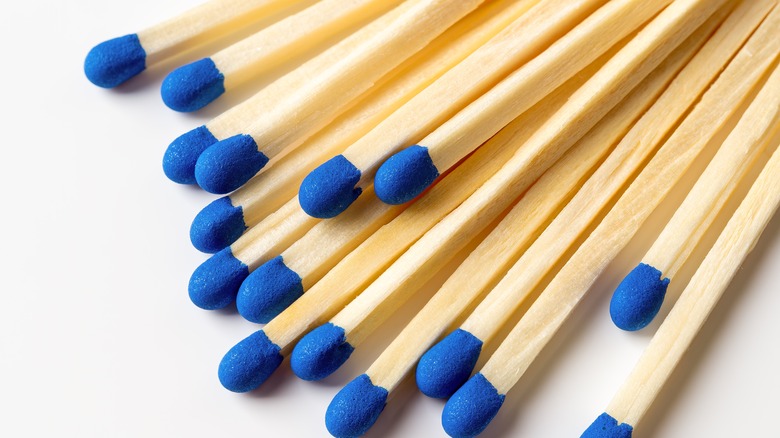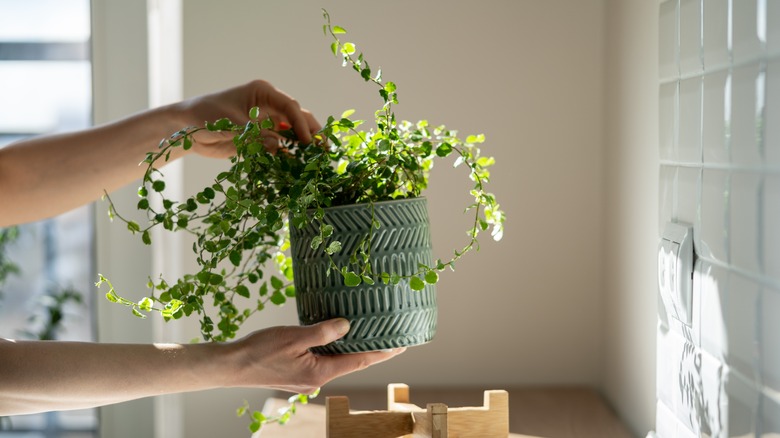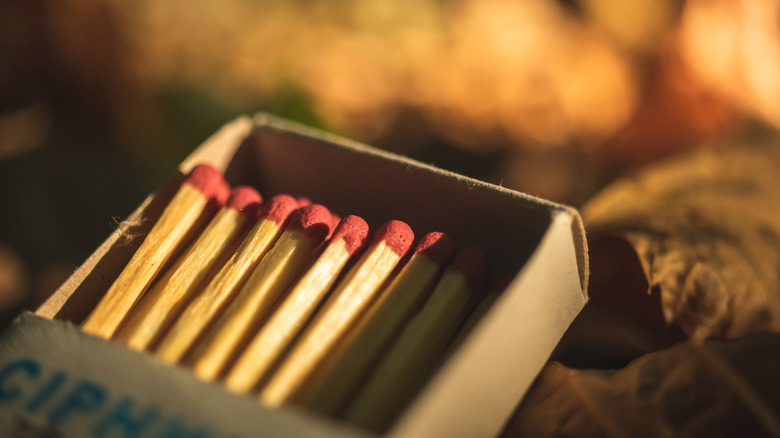The Case For Throwing Used Matches In Your Garden
Having a green thumb isn't always a smooth ride when caring for a garden, and there are always new things to learn along the way. On the other hand, if you don't have the greenest thumb but enjoy caring for plants, there are many easy plants to grow for beginners, and following small hacks can help you get to where you want to be with your gardens. For example, planting used matches in your plant's soil can help them flourish. Matchsticks carry numerous benefits that can help your plant. For instance, matchsticks have different elements, such as potassium chlorate, magnesium, phosphorus, ferric oxide, and sulfur, that help promote strong roots and bright foliage.
Using matches in your plants works better for small potted plants instead of more extensive gardens. You would need many matches if you put them in your backyard. However, they work great if you're planting a small number of flowers, herbs, or fruits in your kitchen. The bright side is you'll be able to use the matches a second time instead of throwing them away after the first use. Here's everything you need to know about using matches in your garden.
Matches work as a fertilizer
We mentioned how matches are filled with various elements that help strengthen the plant's roots and can act as a fertilizer. Since plants are so different from each other, they often require different types and amounts of fertilizer. Placing the heads of the matches inside the pots will release phosphorus, sulfur, and magnesium over time when you water them. If you notice your plants lacking growth and strength while inside, they might not be receiving enough nutrients, so the matches will give them the extra boost they need.
On the other hand, using matchsticks is a lot safer than adding chemical fertilizer to your indoor plants. While chemical fertilizers and commercial pesticides help your plants grow while keeping pests away, it isn't always the best option to have inside your home. Instead, the sulfur released from the matches in the soil helps prevent pests from going near your plants. In addition, potassium chlorate also helps with pests since they act as a pesticide and disinfectant that are beneficial to your fruits and veggies. However, to keep pests away, you'll want to use unlit matches because once the matchstick is lit, it burns out the needed potassium chlorate. As a result, you'll be able to keep the matches in your pots until you notice the head has completely dissolved.
How to use matchsticks for your plants
Figuring out how many matches to use in your pots can take time and effort. The goal is to use between 10 to 20 matches per pot. You want to stick the matches headfirst halfway into damp soil. You don't have to bury them completely; you just want the head submerged in the soil. However, keep the matches away from the stems and the roots to prevent causing damage to them. Remember to keep them evenly separate throughout the plant. In addition, you might have to adjust the number of matches you use depending on the size of your pot.
Once you place the matchsticks inside the soil, leave them in for an hour. After, take out one match to see if the head has dissolved; if it has, remove all of the matches, but if it's not, leave them in there for an additional 15 minutes or until completely dissolved. Next, add a few matches into a watering can to create a liquid fertilizer and water the soil. When the matchsticks are in the water, the heads will dissolve, allowing the water to soak up the elements and disperse them in the plants. Plus, it'll give your plants additional nutrients.


